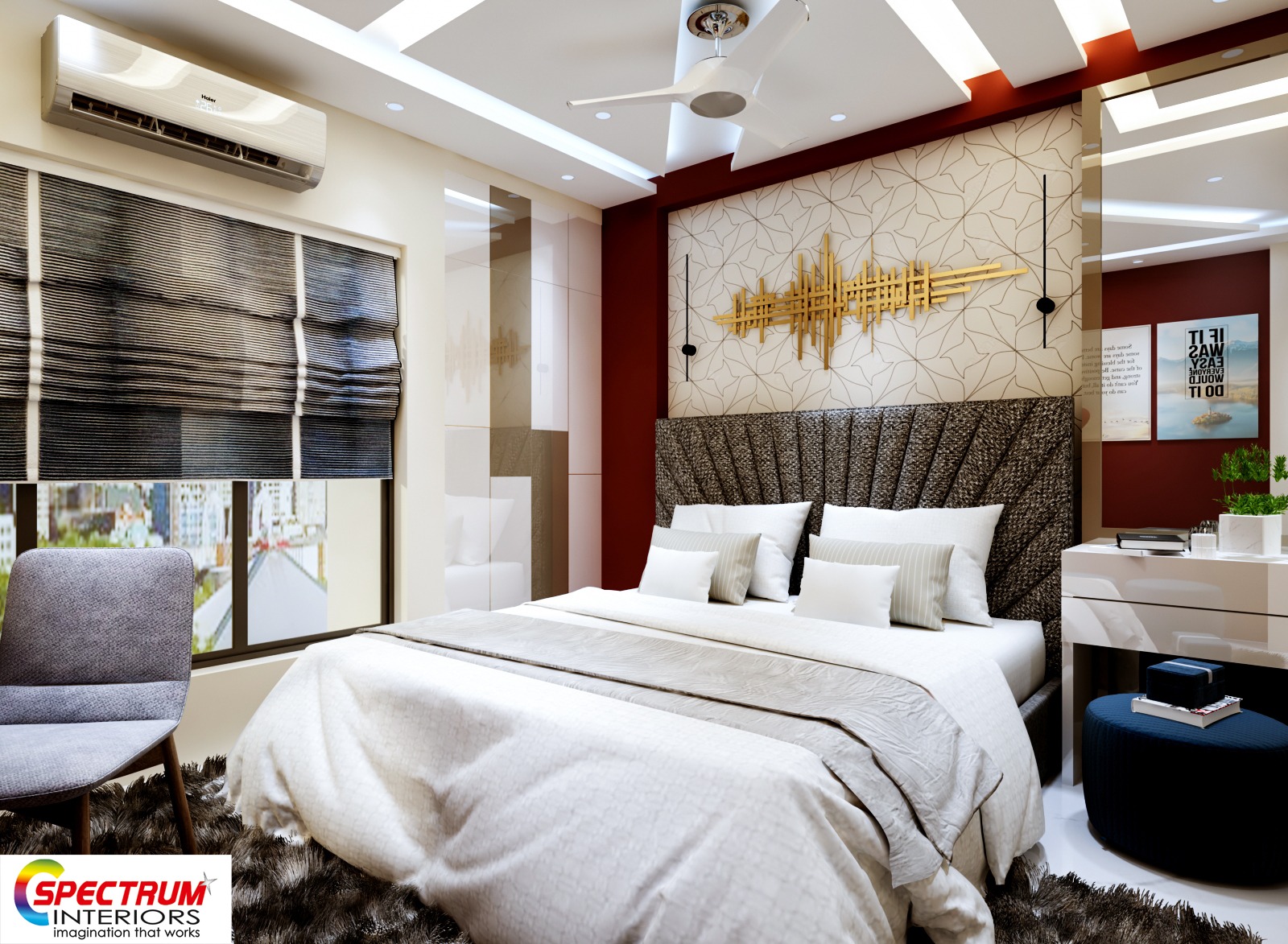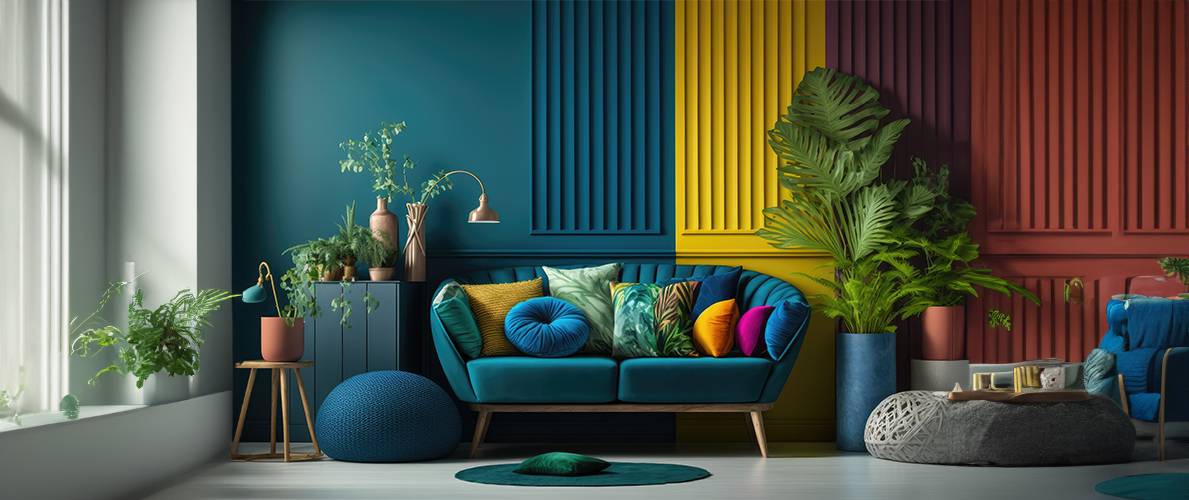Design a stunning look with miami interior design that reflects elegance and functionality.
Transform Your Home With Vital Concepts of Interior Decoration and Aesthetics
The art of transforming your home with the crucial concepts of indoor design and aesthetic appeal requires a thoughtful method that balances color, balance, and spatial understanding. By comprehending the influence of shade concept and the value of appearance and patterns, one can develop rooms that are not just aesthetically enticing yet additionally deeply individual. Attaining this balance includes greater than mere decoration; it incorporates a critical arrangement and a keen understanding of just how each component engages within an area. As we check out these foundational concepts, consider just how they could redefine your understanding of home and personal expression.
Understanding Color Concept
Color concept is a fundamental aspect of indoor design that substantially affects mood, assumption, and general visual. Recognizing the principles of color concept allows developers to produce areas that reverberate emotionally with passengers while fulfilling useful demands (miami luxury interior design). Shades can be classified right into 3 main types: key, secondary, and tertiary. Each group plays an essential function in developing consistency within an area.
The psychological influence of colors is extensive; warm shades such as reds and oranges evoke power and warmth, while awesome tones like blues and eco-friendlies advertise peace and peace. In addition, using complementary shades enhances aesthetic passion, developing striking contrasts that can boost a space's allure.
Neutral colors, on the other hand, act as a flexible backdrop, enabling various other style components to radiate. It is important to think about factors such as lights and the area's purpose when picking a shade scheme, as these can modify the assumption of shades throughout the day.
Eventually, a well-considered color pattern can transform an area, cultivating a sense of convenience and style that lines up with the citizens' choices. Proficiency of shade theory is, as a result, an important ability for any type of interior designer aiming to create unified and welcoming settings.
Achieving Balance in Style
How can developers attain a feeling of stability in their rooms? Accomplishing equilibrium in design is basic to creating unified insides. Designers can use three main types of equilibrium: in proportion, asymmetrical, and radial. Balanced equilibrium entails preparing elements equally around a main factor, fostering a sense of order and serenity. This kind commonly features sets of furnishings or art work, enhancing visual stability.
Unbalanced balance, on the other hand, counts on varying components that still attain a natural look. This approach permits even more dynamic and informal arrangements, giving passion while preserving equilibrium. By very carefully choosing differing dimensions, colors, and textures, designers can produce a visually compelling room that feels well balanced yet energised.
Radial balance emphasizes a central centerpiece with aspects emitting external. This design is generally seen in round designs, where furnishings and design create a cohesive border that draws the eye inward.
Inevitably, attaining equilibrium needs thoughtful factor to consider of scale, percentage, and the partnerships in between components. luxury interior design. By skillfully applying these balance concepts, developers can transform areas into settings that really feel both cosmetically pleasing and functionally unified, boosting the overall experience for occupants
Value of Spatial Understanding

A keen feeling of spatial awareness enables designers to identify centerpieces within a space, assisting the customer's attention to key attributes while maintaining a total feeling of unity. It also aids in the calculated positioning of lighting, which can dramatically affect the understanding of space and mood. Additionally, understanding spatial connections allows the designer to satisfy the particular demands click to read more of citizens, making certain that each location offers its designated objective without endangering appearances.
Eventually, spatial awareness is vital for taking full advantage of the possibility of any kind of interior space. By carefully taking into consideration the interplay in between dimensions, layout, and function, designers can produce atmospheres that not only fulfill practical requirements however additionally evoke a sense of convenience and appeal, boosting the general living experience.
Incorporating Structure and Patterns
Embracing a varied variety of structures and patterns can dramatically enhance the aesthetic and tactile appeal of an interior area. The tactical use different find out this here materials-- such as timber, metal, fabric, and rock-- develops deepness and rate of interest, making a room really feel extra welcoming and dynamic. Integrating smooth surfaces with rough textures can establish an equilibrium that draws the eye and engages the senses.
When including patterns, think about both range and rep. Large patterns can act as focal factors, while smaller, refined designs can match other elements without frustrating the area. Layering patterns, such as pairing floral paddings with candy striped throws, adds intricacy and a sense of harmony if carried out thoughtfully.
It is also essential to preserve a natural shade palette, ensuring that structures and patterns work with each other rather than compete for attention. By picking a couple of key structures and patterns, you can create a combined visual that mirrors your personal style while enhancing the total ambiance of the space. Eventually, the careful consolidation of these aspects can transform a mundane area right into a sophisticated setting abundant with personality and warmth.
Individualizing Your Room
Producing an area that shows your individuality is essential to achieving a truly welcoming setting. Customization in interior layout enables you to infuse your unique design and interests right into your home, transforming it from a mere sanctuary right into a refuge that talks to who you are. Begin by picking a shade scheme that reverberates with your emotions-- bold shades can invigorate, while soft tones provide peace.
Incorporate art his response work and decoration that reflect your passions, whether it be traveling, nature, or abstract principles. Presenting personal collections, such as books, pictures, or keepsakes, can stimulate treasured memories and create focal factors within an area. In addition, consider tailoring practical pieces, like upholstered furnishings, to line up with your aesthetic choices.

Verdict
Finally, the change of a home through the important principles of indoor design and visual appeal requires a detailed understanding of shade theory, equilibrium, spatial recognition, texture, and personalization. Each element contributes significantly to producing an unified and useful living atmosphere - miami luxury interior design. By thoughtfully incorporating these principles, individuals can enhance the visual appeal and psychological resonance of their areas, eventually cultivating a home that shows distinct identifications while providing comfort and practicality